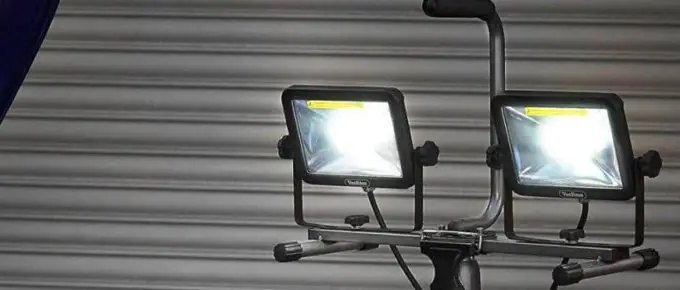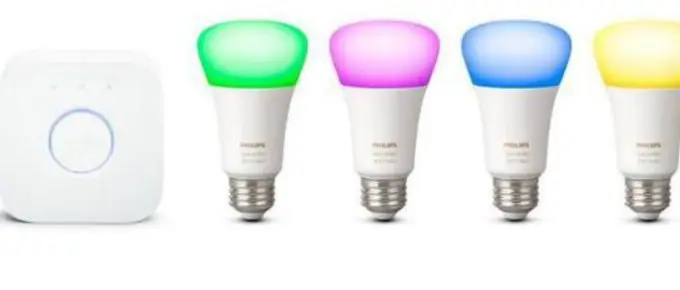Once you experience control of light using your smartphone, there is no way that you would want to go back to using a normal lighting setup. With such a variety of products in the market, it can be difficult to choose the right solution. Among this huge variety, the most convenient ones are Ilumi and Hue. With them, you don’t need to worry about anything. To find out which one would suit your need, read the thorough comparison down below.
Our Verdict
Quick Navigation
If you are looking for ways to convert your home into a smart home, then smart home lighting is a great way to start with. While Ilumi is not really a part of the smart home, it only allows you to control the Ilumi lights remotely via Bluetooth within the bulb range, and it can not be integrated into the smart home devices. But if you are just interested in colorful light, ilumi might be a great choice for you. On the other hand, with Hue, you get smart integration, better control, and a wide range of colors, so definitely, Philips Hue is, without a doubt, the choice to go with. It has extensive features and excellent smart home integration. We would suggest going for Hue if you want to make a brighter smart home.[/su_note]
Ilumi Vs Hue: Comparison Chart
| Specifications | A19 ilumi | Philips Hue White and colour A19 |
|---|---|---|
| CRI | Between 82 and 94 CRI | Between 80 and 91 CRI |
| Colour Temperature | 2000-4000K | 2000-8000K |
| Lumens | 800 Lm | 850 Lm |
| Watts | 9.5watt | 9watt |
| Technology | Bluetooth LE | Zigbee |
| Bridge/Hub | Doesn’t require a bridge or a hub | Requires Philips Hue Bridge to work |
| Compatability | No | Nest, Lutron, Beddi, singlecue Gen 2, Wink |
| Google Assistant, Amazon Echo, IFTTT, Apple Homekit | No | Yes |
| Price | Check Price | Check Price |
Differences
1. Lumens, Colour Temperature And CRI
The Ilumi is brighter than Philips Hue. It also uses less energy, which is 9.5 Watts vs. 10 Watts. After having it tested, we saw that Philips Hue lacks some brightness. The difference is not significant, though. However, the 3rd and the 2nd generations of Philips Hue provide brighter colors. This is 800 lumens as compared to 600 lumens in the first generation. For a vibrant green color, you can buy the 3rd generation, Philips Hue. The second and first-generation products are yellowish-green.
Hue A19 offers 800 lumens. It has CRI between 80-91 and a color temperature between 2000-4000K. Ilumi, on the other hand, offers 850 lumens and has a CRI between 82-94. So overall, it can be said that the ilumi light bulb consumes less energy than might be a better choice here.2. Technology
Philips Hue utilizes Zigbee technology. This gives you complete control over all the Hue products. However, you will need to purchase the Philips Hue bridge. The bulbs can’t work without the Hue bridge. The bridge converts the internet commands to Zigbee frequency. You can have access to the bulbs as long as you have a working internet connection. Check the Hue app, and you can switch the lights on and off! You can have 24/7 control just at the tip of your fingers.
Ilumi uses Bluetooth technology. So as long as you are in the range of your ilumi light bulbs, you can control them through your phone. It uses meshing technology. This means that if you are in the range of at least one bulb, you can control the rest. One bulb will relay the command to the other bulbs. The technology allows control over the bulbs that are present in the network.
It is important to discuss the security associated with both technologies. Bluetooth LE used by ilumi can’t be hacked into. Your phone will pair with the bulbs as long as they are in the range. Philips Hue uses an internet connection to establish control. This makes it vulnerable to hacking and threats. Apart from the security feature, Zigbee outranks Bluetooth LE. It gives remote access and control, which is absent in Bluetooth LE.
3. Bridge/Hub
Ilumi light bulbs don’t require a bridge or a hub to function. The bulb connects to the smartphone through Bluetooth. The bulbs can be controlled through the ilumi app. However, you will have to be in the range of Bluetooth connection to control the bulbs. Hue, on the other hand, requires the Philip Hue bridge. The lights can’t be controlled without that. So along with the Philips Hue lighting system, you should purchase the Philips Hue starter kit as well. It includes a bridge. The bridge connects the bulb to the WiFi router via an Ethernet cable. It converts the commands from the internet to Zigbee radiofrequency. This way, you can get 24/7 control over your lights as long as you have functioning internet and the app.4. Features
Philips Hue, as well as Ilumi, have features such as syncing with music. Ilumi comes with some other features as well. The torch feature can help you turn the light on and off through the app. All you will need is your smartphone. We had this feature tested, and it worked well. You can keep your smartphone in your pocket, and the bulb will turn on and off based on your movement. Just keep in mind that your phone should be with you because it is the phone that triggers the lights.
Philips Hue comes with motion sensors instead of the Torch feature. The only downside to this is that you will need to purchase the motion sensors separately. These sensors are wireless, and hence you can keep them wherever you like. The lights will get triggered by your movement and not by your smartphone.
Illumi offers the shake to turn on and off and the Simon game feature. You can have some fun with the lights. These features are accessible through the app. The dashboard has all these features. Philips Hue doesn’t have such features. But Philip Hue is still great. As Philips Hue customers, you are free to create features that you find enjoyable. You can sync the Hue lights with games or movies. You can set up the right ambiance to watch your favorite show or playing your favorite game.
5. Compatibility
Hue works well with all Philips Hue bulbs and lamps. You can pair Hue with Beddi Smart alarm, Nest cameras, sensors, thermostats, and singlecue Gen 2 gesture control device. For example, you can sync the Nest Protect with Philips Hue. In case of a fire, Nest will alarm you by flashing the lights red. It will keep the lights turned on to help you navigate through the smoke.Philips Hue can be integrated with Amazon Echo and Google Assistant. You can ask Alexa to dim the lights. It will work. It is also compatible with Wink Hub. Philips hue will communicate with the applications that are a part of your smart home system. Ilumi, on the other hand, is not compatible with third-party devices. You can’t integrate it with your smart home system. Ilumi doesn’t integrate with Amazon echo or google assistant either.
6. Apple Homekit
Philips Hue light bulbs integrate well with iOS devices. You can ask Siri to turn on the lights. You can use your phone to change scenes, colors, and a lot more. You can use your Apple Watch to dim the lights. A hue is a good option if you are using Apple. In case you are using android, the Homekit factor doesn’t weigh in here. Ilumi doesn’t integrate with Apple HomeKit. You can download the ilumi app on your device. However, you can’t control the lights through Siri.
7. IFTTT
Philips Hue allows you to use existing features or permits you to customize your own. You can play with lights by triggering different settings. For example, the lights can blink green or blue every time your team scores. The lights can change colors every time it begins to rain. Ilumi doesn’t have IFTTT integration. Ilumi is still testing Amazon Echo integration and IFTTT.
8. Apps And Desktop
You can download the ilumi app on iOS and Android devices. You can easily control the light bulbs through the app. Philips Hue offers a Google Chrome Extention. Chrome Hue allows you to control the bulbs through your laptop. Such extensive options give seamless control.
9. Hardware Colour
Ilumi offers greater choices when it comes to hardware colors. It offers its bulbs in black and white. Hue comes in a single clour, white. It is great to have wider options when it comes to design. You can choose the color of your ilumi hardware depending on the color scheme of the room.Similarity
1. Smart Dimmers
In the case of Philips Hue and ilumi, you don’t need to worry about wiring. You need to skew in the bulb, download the app, and pair the two.
2. Compatibility With RGBW lights
Philips Hue and Ilumi are compatible with RGBW light bulbs. You can choose between a million colors and opt for your favorite color scene. You can pair up to 50 bulbs with the app and control it at the same time. The bulbs can light up for 25000 hours.
3. Entertainment System
You can set up schedules, wake-up modes, or sync your lights with the entertainment system. The music syncing with ilumi may seem a little offbeat, though. Philips hue can be synced with music, movies, and even video games. It establishes excellent control over the entertainment system.
Features Of Ilumi
The app is everything in the case of ilumi. Ilumi comes with a clock that helps you enjoy lighting as per your schedule. You can set the ambiance of the room by setting customized effects. It gives you robust and long-range Bluetooth mesh for control on up to 50 bulbs. Ilumi doesn’t specifically require any hubs, bridges, or routers. It also allows you to integrate your music and entertainment system with the lights. It is one of the most energy-effective solutions.
Technical aspects
- Brightness– 800 to 1100 lumens
- Energy– 1-15 watts
- Life- Upto 20 years
- Colour tunable- 2000k to 6000k in white plus million colours
Features Of Philips Hue Light
This is a wireless and Wifi Smart LED Light Bulb. Hue is multicolored and energy-efficient. The bulb can be controlled with your smartphone or tablet or smartwatch. It has a color palette of over 16 million colors that come in different tones of light. Sengled WiFi doesn’t require hubs, gateways, or controllers to connect to. You can time your bulbs and schedule them to create different modes that you prefer.
Techincal Features
- Dimensions- 11.7×6.2×6.2 cms
- Color- Multicolored
- Material– Aluminium and Plastic
- Wattage– 9 watts
FAQs
Philips Hue and ilumi come with the bulbs individually. The model has to be selected. In the case of Hue, the bridge has to be purchased as well.
Ilumi will be a good option if it fixes the bugs. It needs to create a sound app and a product integrated into the smart home system.
Ilumi has 2 apps. Namely, the original one and the new one. You need to download the original app and create an account there. Then you can download the new app. This way, you will save the original app’s functions and get the updated interface of the new app.
You will need to press the delete button and then confirm it. The app will remove the connection. Next, you have to reset the ilumi bulb. This can be done by switching it on/off five times. Once the bulb gets reset, a series of colors will display, and finally, it will turn white.
Bottom Line
If you are looking for a lighting system that will integrate with your smart home, then Hue is the way to go. Ilumi app is not a part of the smart home family. It simply allows you to control ilumi light bulbs through Bluetooth. It does not offer the kind of features that Hue does. When it comes to apps, Philips hue offers better clarity. There is a lot of confusion amongst the apps in Ilumi as to which one is original. After having ilumi tested, we experienced connection loss, and the settings were also difficult to alter. One perk of ilumi is its price. Ilumi doesn’t cost as much as Hue. However, when it comes to choosing between the two, we recommend Philips Hue. It costs more but offers great features that are not available in ilumi.
Philips Hue Smart Hub - Editor's Choice
Summary
Hue A19 offers 800 lumens. It has CRI between 80-91 and a color temperature between 2000-4000K. Ilumi, on the other hand, offers 850 lumens and has a CRI between 82-94. Philips Hue utilizes Zigbee technology. This gives you complete control over all the Hue products.









Leave a Reply